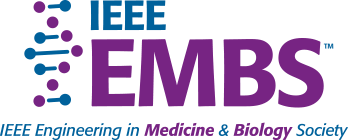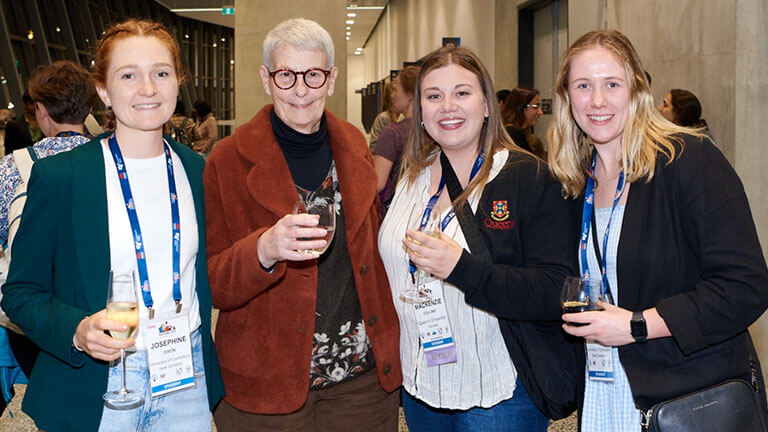Many of the leading and foundational minds behind data science were women. Jumping many decades forward to today, as our modern digital world continues to accumulate increasing amounts of data — data that can only become useful through the mechanics of data science — women continue to innovate and lead in this highly complex field.
Our world is brimming with data. So what?
Our current period is commonly referred to as the Information Age. Yet, we can only give it that moniker as a result of the efforts of data scientists around the world. Global healthcare data collected in 2020 was estimated at more than 2,300 exabytes (1 exabyte equals 1018 bytes), a number that has surely expanded since then. With the number of blogs, social media posts, emails, business records, government data entries, and every other form of data produced in the world each year, it is estimated that we will generate 175 zetabytes (1 zetabyte equals 1000 exabytes) of data by the year 2025.
So much data — what we now commonly refer to as “big data” — surely has the potential to be put to good use, improving our lives and the world in which we live. Doesn’t it? True, but it turns out that data is a jealous guardian of its secrets. This is where data science comes to our rescue, bringing together a multidisciplinary set of tools — statistics, computer science, informatics, data visualization and many more — to explore and analyze data, and extract, explain and visualize useful patterns and insights that can enable dramatic improvements in the ways we live and survive in our world.
Early pioneers in data science
Florence Nightingale — Data Science Innovator
Data science is a relatively young discipline. As a systematized field of study and application, it dates back only several decades to the 1960s, around which time John Tukey described the field of data analysis, the forerunner of modern data science. However, its earliest innovators made real and foundational use of data science much earlier, and of particular note is the work of Florence Nightingale. She is best known for her foundational analytical work, which dramatically and critically improved the conditions within military hospitals throughout the United Kingdom (UK) during the Crimean War, as well as her impact on the profession of nursing as a whole.
What’s less well known is the work Nightingale performed from 1858 to 1863 analyzing army mortality data, culminating in a royal commission at the request of Queen Victoria. Around 18,000 British soldiers died during the Crimean War. Along with leading statisticians of the day, Nightingale’s commission organized and analyzed the fatality data, and was able to uncover that approximately 16,000 of those deaths occurred due to preventable diseases brought on by poor sanitary conditions in army hospitals — bad drainage, contaminated water, overcrowding, and poor ventilation — and not as a result of battle. This was an actionable insight from a mass of data that might otherwise have been ignored, which helped establish new standards for sanitation and sanitary medical practices in the British army and the UK as a whole. It was arguably one of the first and most impactful uses of data science.
More importantly, Nightingale developed a method of data visualization — now known as the Nightingale rose diagram — which increased the accessibility of the royal commission’s results to government personnel and laypersons. It is this multi-layered approach taken by Nightingale and her colleagues — data gathering, statistical analysis, insight development, data visualization — and the feat of making their insights understandable and accessible to those who could create public value from them, which elevates their work to the level of data science.
Katherine Johnson — NASA Data Scientist
The outputs from the application of data science can take many useful forms, from demographic insights to business metrics to aerial flight paths and beyond. Throughout the 1950s and 1960s, Katherine Johnson applied her impeccable mathematical skills and data analysis talents to successfully calculate flight paths of manned space missions for the National Aeronautics and Space Administration (NASA). In 1961, she calculated the perfect flight trajectory for Alan Shepard’s ascent to become the first American in space. Throughout her long career, she continued contributing data analysis and outcomes to the NASA Mercury and Apollo missions, contributing her skills to the landing of the first human beings on the moon.
Data science heroes of today
Since the days of its inception as a discreet discipline, data science has advanced leaps and bounds, propelled by new technologies and, in some cases, contributing to their creation. Along the way, data science has increased in several ways — complexity, the number of contributing disciplines, and, importantly, the depth and breadth of application for its use, to name only a few. Today, there is no limit to the ways in which data science may be applied to produce actionable insights.
Orna Berry — Renaissance Data Scientist
Born in Jerusalem, IEEE EMBS member Orna Berry has built a rich legacy of data-driven insights that have created enduring value for data science, communication technology, public–private partnerships, and many other sectors. Often referred to as the “First Lady of Israeli Hi-tech,” she received her B.A. in statistics and mathematics from Haifa University in 1975, followed by her M.A. in statistics and operations research from Tel Aviv University. In 1986, she received her Ph.D. in computer science from the University of Southern California, where her research into asynchronous distributed computations contributed to the acceleration of analytical speed using distributed simulation programs.
Following completion of her Ph.D., Dr. Berry held industry research positions at System Development Corporation, Burroughs, Unisys, and later the IBM Haifa Research Lab, where her simulation work contributed to improvements for various Intel processing chip architectures. From 1993 to 1995, she held several positions in the data communications technology field, including the founding of Ornet Data CommunicationsTechnologies, acquired by Siemens in September of 1995. Throughout her career in industry, Dr. Berry has been renowned for her ability to create bridge partnerships between industry and the public sector, greatly accelerating innovation in the Israeli technology sector.
In 1997 Dr. Berry became the first and only woman to hold the post of chief scientist and director of the Industrial Research and Development Administration of Israel. During that time she has participated in several data-driven committees, including the Brodet (2007) and Tishier (2012) committees, which analyzed data for the Israeli defense budget to identify management insights. She led science and technology initiatives in 2018 to launch national Israeli programs in artificial intelligence (AI) and quantum computing, and is considered the architect of Israel’s national AI strategy.
Dr. Berry returned to the private sector in 2021 when she was appointed director of technology in the office of the chief technology officer at Google Cloud. Over the years her leadership in data science and technology has been recognized through numerous awards and accolades, including being named “One of the 25 most influential and important women in the technology world” in 2005 by the technology magazine Red Herring. In 2014, she was inducted into the Women in Technology International Hall of Fame. She ranked 51st on the “100 most influential people in Israel” list compiled by Israeli financial magazine The Marker in 2019, and was the recipient of the prestigious Hugo Ramniceanu Prize in Economics from Tel Aviv University in 2021.
Natalia A. Trayanova — Applied Data Science in Action
As data science has matured over the decades, its potential applications have increased more than any other discipline in science, technology, engineering and mathematics, and the work carried out by IEEE EMBS member Natalia Trayanova is a prime example of data science in action. Dr. Trayanova holds the Murray B. Sachs Professorship in the Department of Biomedical Engineering at Johns Hopkins University. She is also a professor of medicine at the Johns Hopkins School of Medicine and a professor of applied mathematics and statistics at Johns Hopkins. She is the director of AI research in health and medicine in the AI-X Foundry, a university-wide initiative to bring AI into all aspects of research and scholarship at Johns Hopkins, and she also directs the Alliance for Cardiovascular Diagnostic and Treatment Innovation (ADVANCE), a research center aimed at bringing innovative engineering and AI-based approaches to cardiovascular health directly to the clinic.
The daughter of a physiologist father and a mother who was a professor of economics, Dr. Trayanova was destined for a data-driven career. She earned her M.S. in physics from Sofia University, Bulgaria in 1982, followed by her Ph.D. in 1986 from the Bulgarian Academy of Sciences, in which her academic research focused on musculoskeletal biophysics.
Taking a machine learning, data-driven approach to the prognosis and treatment of cardiovascular disease, Dr. Trayanova’s lab at Johns Hopkins Medicine uses computational cardiology to combine realistic modeling of the functional state of diseased organs with machine learning. Her research works to uncover data-driven mechanistic relationships, and features of a patient’s heart condition that will help predict a forward-looking trajectory of disease progression and risk of adverse cardiac events. Using the results of the model, she hopes to better protect patients with severe cardiac conditions from adverse events, while simultaneously informing stronger cardiac treatment plans to maximize health outcomes and minimize disease recurrence.
Dr. Trayanova was inducted into the Women of Technology International Hall of Fame in 2019, and she has been awarded the Distinguished Scientist Award (2019), followed by the Zipes Distinguished Lectureship Award (2022) from the Heart Rhythm Society. In 2023, she was awarded the Gordon Moe lectureship by the Cardiac Electrophysiology Society. She was elected a fellow of the National Academy of Inventors in recognition of her innovations.
This is just the beginning
Despite its robust potential for discerning insights from massive amounts of information, data science is still in its infancy. Future technologies — quantum computing, improved algorithms for machine learning, self-supervised AI learning models, and more — are poised to unleash potential value from data science processes that have only been dreamed of, so far. Women have been leading innovation in the data sciences since its inception, and the future will certainly be shaped by those continuing efforts. As the next generation of data scientists takes its place at the cutting edge of research and development, they will have plenty to inspire them as they look to leaders such as Nightingale, Johnson, Berry and Trayanova for inspiration.






